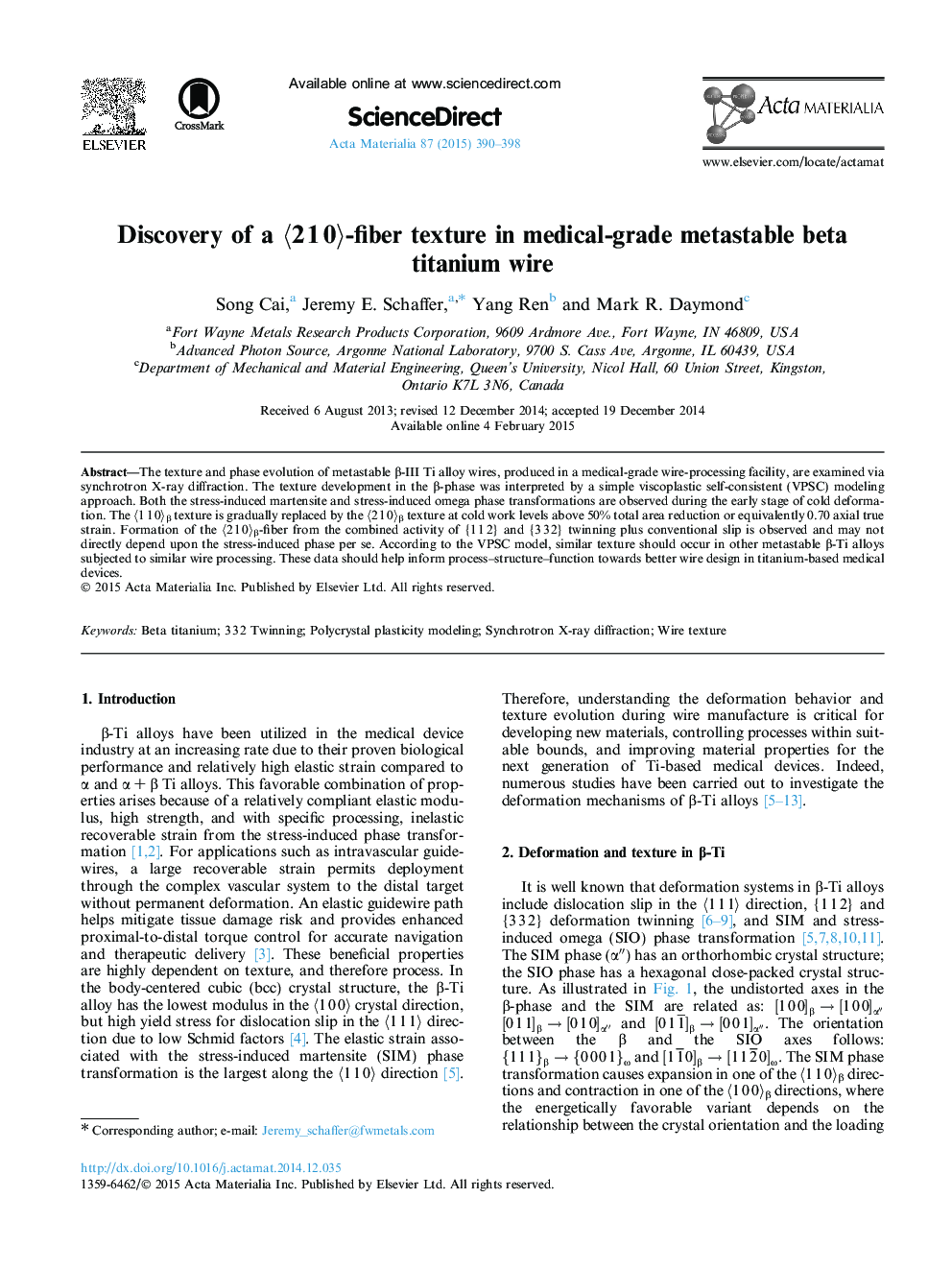| Article ID | Journal | Published Year | Pages | File Type |
|---|---|---|---|---|
| 7880740 | Acta Materialia | 2015 | 9 Pages |
Abstract
The texture and phase evolution of metastable β-III Ti alloy wires, produced in a medical-grade wire-processing facility, are examined via synchrotron X-ray diffraction. The texture development in the β-phase was interpreted by a simple viscoplastic self-consistent (VPSC) modeling approach. Both the stress-induced martensite and stress-induced omega phase transformations are observed during the early stage of cold deformation. The ã1 1 0ãβ texture is gradually replaced by the ã2 1 0ãβ texture at cold work levels above 50% total area reduction or equivalently 0.70 axial true strain. Formation of the ã2 1 0ãβ-fiber from the combined activity of {1 1 2} and {3 3 2} twinning plus conventional slip is observed and may not directly depend upon the stress-induced phase per se. According to the VPSC model, similar texture should occur in other metastable β-Ti alloys subjected to similar wire processing. These data should help inform process-structure-function towards better wire design in titanium-based medical devices.
Related Topics
Physical Sciences and Engineering
Materials Science
Ceramics and Composites
Authors
Song Cai, Jeremy E. Schaffer, Yang Ren, Mark R. Daymond,
